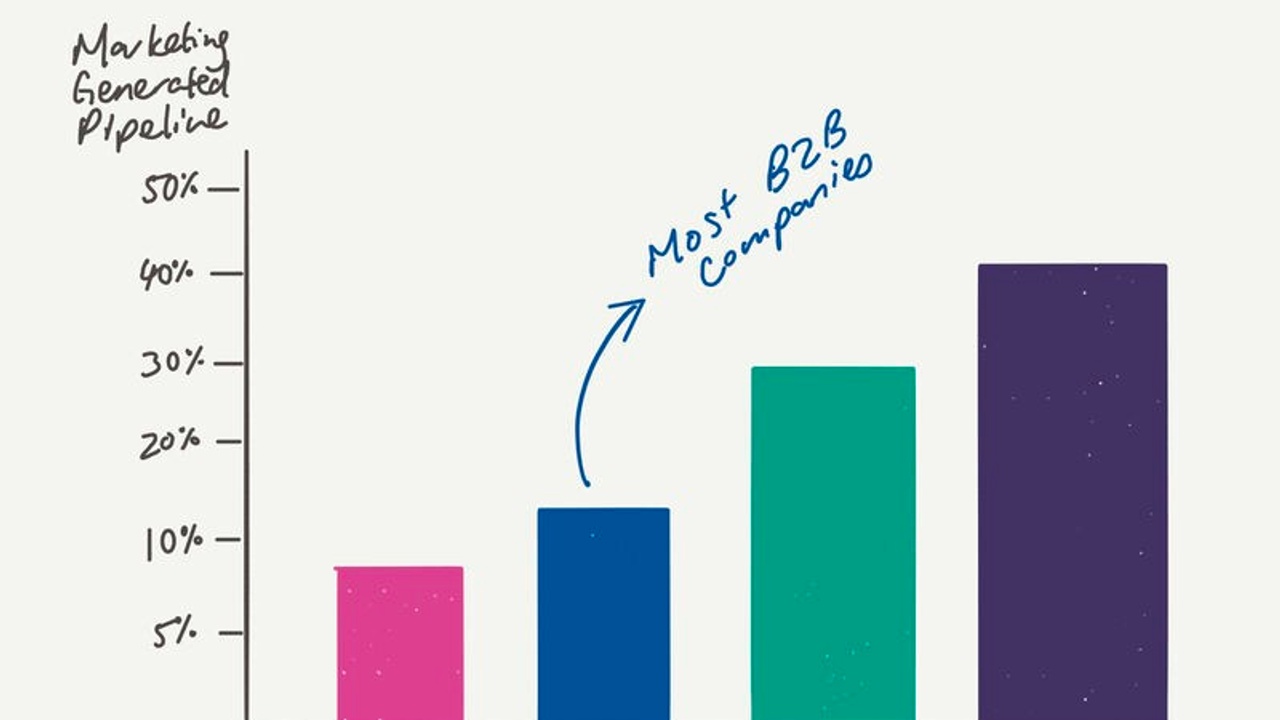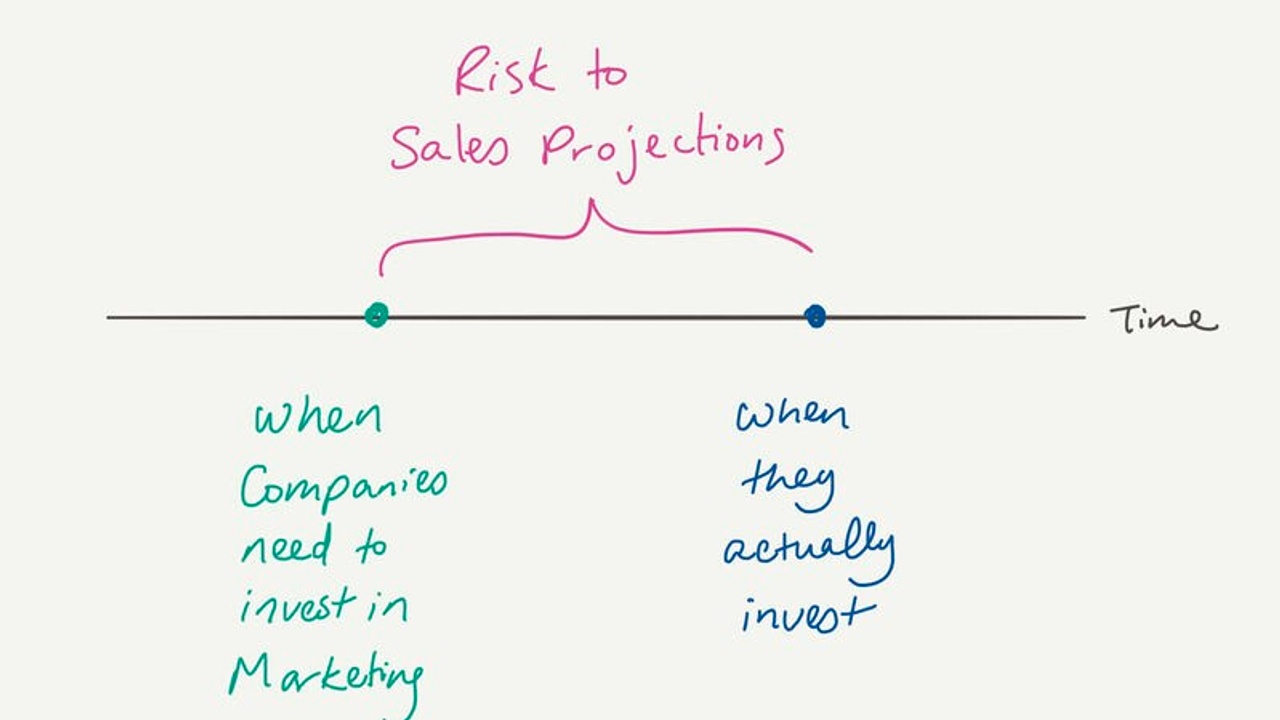Using Data to Build a Demand Gen Engine and Scale Marketing (+ FAQs)

Are you under pressure to deliver more (and better) sales pipeline, but aren't sure how to get more of the right kind of leads through the door?
In this post, we'll cover the core framework we take our clients through at How To SaaS to scale marketing and demand gen. You can use this approach to think about marketing for any company - a lot of the concepts you'll learn about here are first principles. By the end, you'll be able to apply this framework to your particular business.
We'll cover five sections:
- Market forces and dynamics at play that lead to the impact marketing needs to make inside organizations.
- Company dynamics and how to apply these principles for your specific scenario.
- Demand generation and a framework for prioritizing your demand gen roadmap that you can apply to basically any business.
- A step-by-step process for using data to scale up demand gen for your business or product line.
- Frequently asked questions from the community.
In this post:
- Marke...
Marketing Generated Pipeline Maturity

Most B2B companies find themselves over-relying on Sales to generate the bulk of their pipeline.
In such companies, Marketing doesn't have enough budget and does not provide nearly enough coverage to drive revenue.
These are the companies where cold calling, events, relationships are what grow the business. These are also often the companies where Sales reps miss quota more often than not.
The key is to get Marketing Generated Pipeline into a healthy range (at least at 30%). In some cases, this number can be as high as 70-80%.
That's how you know the market is actually coming to you inbound when it needs a specific pain point to be solved. They're aware of you, they've read your content, they trust you as an authority and resource.
It's also how you know that your brand has enough value in the marketplace to win business that does not depend on you dialling to dollars to succeed.
Customers Lead Content and Demand Gen

Marketers who over-index on SEO or Paid Search often (incorrectly) rely on “search volumes” and “keyword difficulty” as their guides on what to prioritize.
This leads to companies fighting for market share like a commodity, inevitably inflating CAC and Payback Period metrics.
Instead, starting with Differentiation as the goal changes how you Go-To-Market:
- You invest heavily into understanding market dynamics and customer pain points
- You build a strategic narrative to educate the market on how to resolve those pain points while separating yourself from the noise
- You create content to educate buyers on the strategic narrative at every stage of their journey
- You leverage demand generation channels and campaigns to scale distribution of the content to your ideal buyers
This approach focuses on the customers and the message, not search volumes or keyword difficulty.
It brings down CAC and improves your Payback Period.
It also opens up infinite scale because you can take th...
Marketing Team Superstars vs. Average Contributors

Companies often try to solve problems without investing enough into hiring, onboarding and nurturing talented team members.
In such companies, salaries are capped and growth is limited. Employees end up playing musical chairs until they eventually decide to leave the company and a new batch joins to replace.
These companies have high-control (and often political) environments, with more oversight and less freedom to emerge as a valuable contributor.
In contrast, companies that realize that talent is everything prioritize hiring the best of the best and are also willing to invest significantly more in those A-players. This includes higher compensation, more freedom to operate, better support and more resources.
These companies end up significantly increasing their likelihood of success because they realize the most essential truth of building winning teams: 1 Superstar is worth just as much (if not more) than 5 average contributors.
They build around Who before they focus on What.
...Tech Stack vs. CMO Tenure
There is an inherent mismatch between implementing new technology into your Marketing stack and how much time you have as a Marketing leader.
While the latest ABM or Attribution or Content (etc.) platform may sound like a phenomenal idea, it is more than likely setting up Marketing leaders everywhere to fail in the long run.
Reason? Tech stack implementations take a lot of time, effort and energy to sort through. Meanwhile, sales targets still need to be hit and not enough pipeline is being generated.
These Marketing leaders find themselves in board meetings a couple of quarters in a row talking about the new programs they are "going to launch" once the platform is live.
Over time, this erodes trust with CEOs and Boards until eventually a change is made.
Instead, Marketing would be much better served focusing on executing plays that generate pipeline and revenue as a starting point to build enough political capital that buys them time to implement a new technology in the first p...
Marketing Accountability Metrics

Too many marketers spend time defending Marketing efforts and their impact on the business when asked about their contribution.
This is where conversations shift to:
- How many badges were scanned at a conference
- How many registrations and attendees a webinar has
- How many contacts were uploaded and contacted via cold outreach
- How many views and impressions the blog / videos / other content had
- How much pipeline was influenced that the sales team ultimately closed
Discussing the above overlooks an important truth: none of it matters if there is no revenue to show for it.
This is why mature marketers focus their efforts on being revenue accountable. They talk about:
- Marketing-Sourced Pipeline
- Closed Won Revenue
- ROI
- CAC
- Payback Period
These are scary metrics to hold yourself accountable to, but doing so shows maturity, experience and capability.
It also builds incredible amounts of trust with your CEO and board because you are aligned with them on expectati...
Delayed Marketing Investment

There is often a gap between when companies need to invest in Marketing and when they actually do it. This puts Sales projections at significant risk.
If you need a certain amount of Marketing support to hit your projections for the year, that investment needs to be made likely in the previous year so that buyers have enough time to make it through their sales cycle.
That means, if you start scaling up your marketing spend end of Q1 / mid-Q2, you're already quite likely to miss your targets.
This includes doing the following ahead of time:
1. Hiring people: A hire made in Q1 won't be fully ramped up to contribute till Q2 at the very least. An open job posting in Q1 is even further out from contribution.
2. Ramping up ad spend: More deals means more MQLs need to be produced, which likely means Ad Spend should have been ramped up a long time ago.
3. Scaling content production: More content to generate demand likely requires a content roadmap to be in place months before, with a tea...
Lead Scoring vs. MQL Quality

Equating MQLs that cross thresholds based on basic actions (e.g. website visits) with MQLs based on expressed intent sets up Marketing to fail.
A prospect who fills out a demo request form is far more qualified than someone who reads 2 blog posts and visits a case studies page.
This is what frustrates Salespeople, who end up complaining about lead quality to the organization. Meanwhile, Marketers point to inflated MQL numbers from list uploads / event contact lists / people who attended a webinar.
Along the way, companies miss their sales projections and board meetings get uncomfortable.
This is where figuring out which actions lead to Pipeline $, Bookings $ and Closed Won $ is critical to understanding which prospects are actually more qualified than others.
Immediately, lead scoring becomes the secondary need - and likely far less important - because Marketing starts to look at growth as its ultimate accountability.
Filling the Gaps in Marketing Degrees

There is a complete mismatch between what is taught in school about Marketing and growing companies versus what businesses actually need help with.
The result is a marketplace where candidates are underprepared to succeed and companies are unable to find enough talent.
Solutions for candidates:
- Self-study Marketing: books / podcasts / videos etc.
- Try to work for a company that prioritizes Marketing as a core growth driver: they will be far more inclined to invest in your growth.
- Take on a side project that helps you develop real-world marketing skills: E.g. start an e-commerce store and try selling products or start an Instagram / TikTok / YouTube channel and try to grow an audience.
Solutions for companies:
- Build an internal school to train employees into the Marketing talent you are looking for
- Invest in and buy resources for your team members, get them access to cutting edge knowledge in the space
- Invest in bringing on great Marketing leaders who can be...
4 Characteristics of Scale-Ready Companies

Scale-ready companies have certain characteristics as they've reached an advanced stage of Product-Market Fit:
- Close Rates > 25% -- Meaning that when a deal enters the pipeline, there is an efficient sales process behind the engine to convert it to Closed Won.
- Net Revenue Retention > 100% -- Meaning your customer base's value grows over time despite the attrition you experience.
- YoY Growth + EBITDA > 40% -- This is the rule of 40. It means the business has enough growth or profitability or both to keep growing the enterprise value of the business.
- CAC Payback < 18 months -- Meaning that the cash invested into growth is returned within a reasonable period. This number should normally be below 12 but when growing aggressively, being below 18 is fine.
If a company has all 4 of these characteristics, Marketing should be scaled aggressively across channels, programs and people.
It means making a big bet on your thesis in a market and believing there is far more TAM avail...




